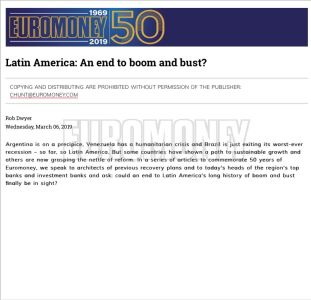Join getAbstract to access the summary!

Join getAbstract to access the summary!
Rob Dwyer
Latin America: An End to Boom and Bust?
Euromoney, 2019
What's inside?
Some Latin American economies may have shaken off their volatile fiscal pasts.
Recommendation
A long series of ups and downs in Latin America’s economies has led to policy reforms that have improved the region’s longer term well-being. But rather than signaling an end to sharp-edged gyrations, these adjustments appear to have better prepared the continent for continued challenges. Drawing on interviews with financial industry leaders, Euromoney journalist Rob Dwyer offers an astute look at the extreme cyclicality that has characterized Latin American economies for many years, as well as the harsh lessons that external debt, currency volatility, geopolitical tensions and populism have taught. Executives, investors and regional analysts will appreciate this broad overview.
Summary
About the Author
Rob Dwyer is Latin America editor for Euromoney.
















Comment on this summary